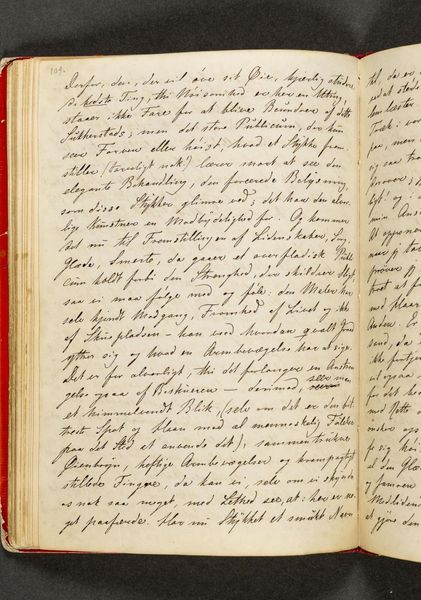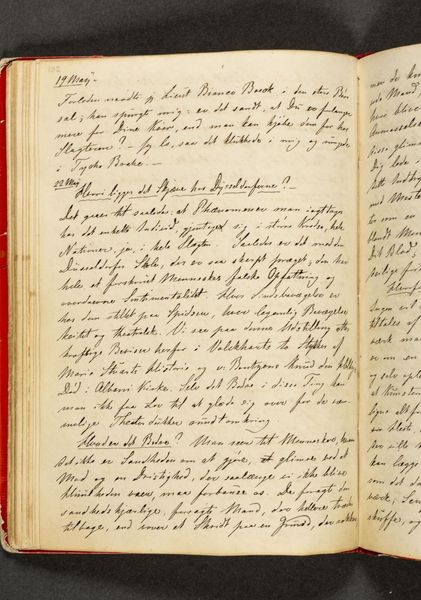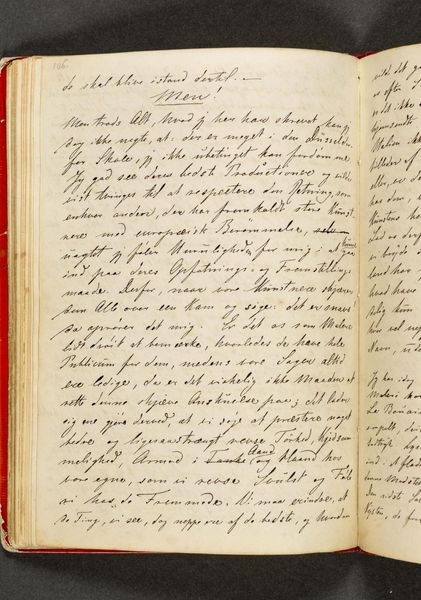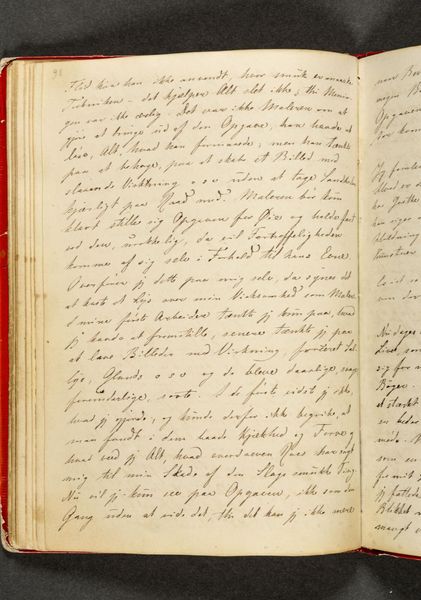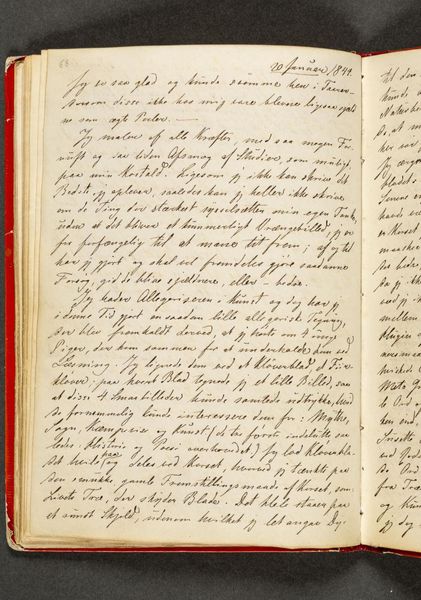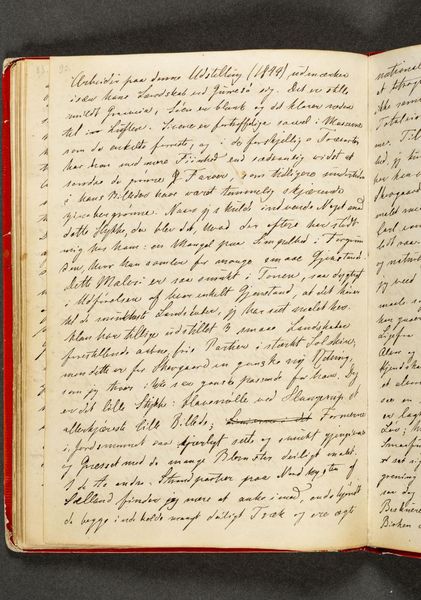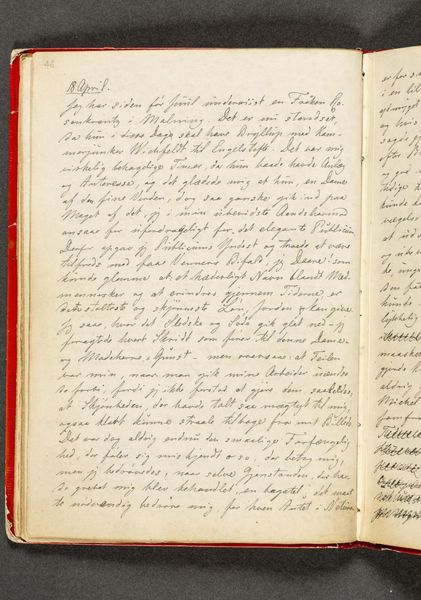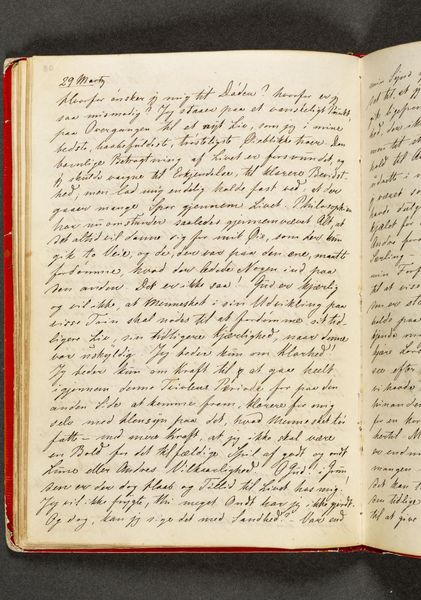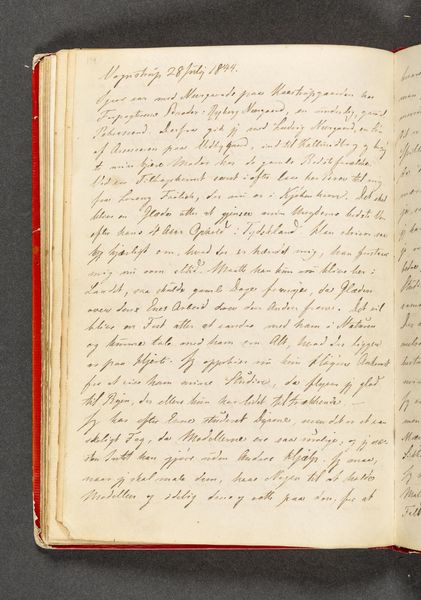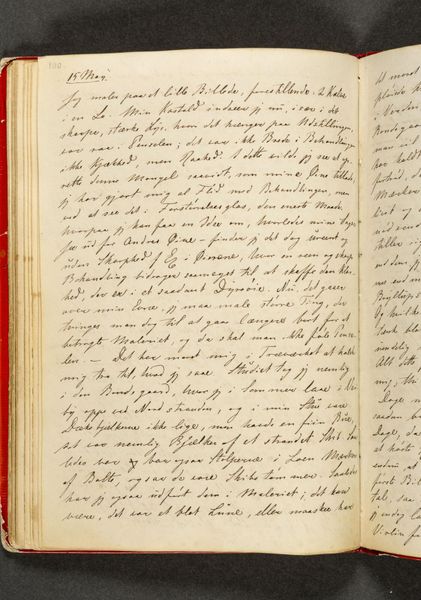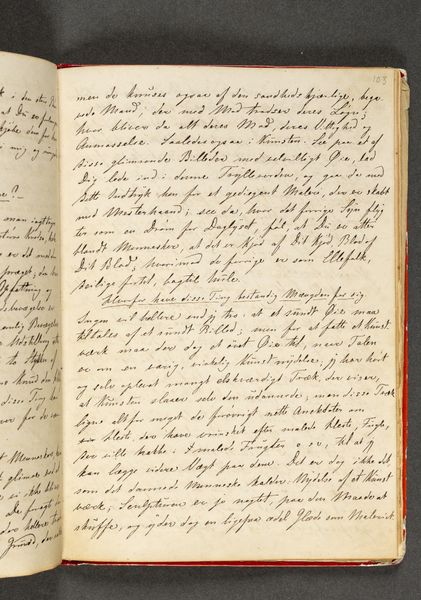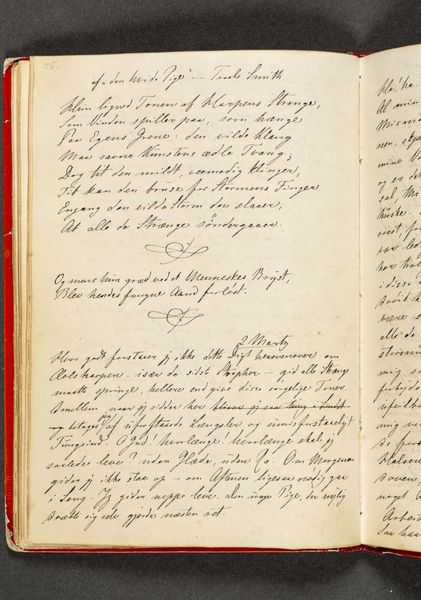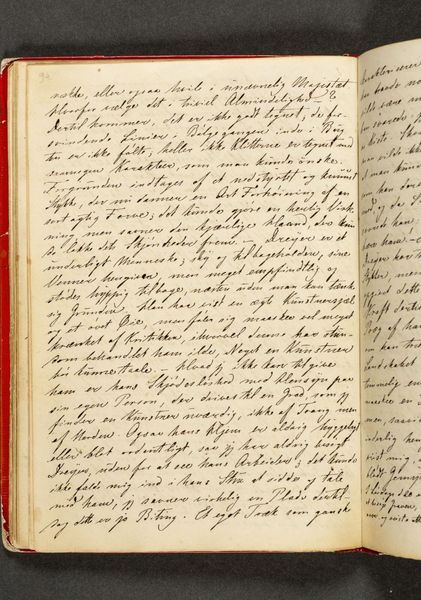
drawing, textile, paper
#
drawing
#
textile
#
paper
Dimensions: 192 mm (height) x 133 mm (width) (bladmaal)
Curator: Here we see “Dagbog. Side 72,” or "Diary. Page 72," a work on paper with textile by Johan Thomas Lundbye, created in 1844. It resides at the SMK, the Statens Museum for Kunst. My immediate thought is how personal it seems, almost like a private thought made visible. The open book format emphasizes intimacy and accessibility simultaneously. Editor: Materially, I’m interested in this relationship between paper and textile, drawing and binding. The book itself—its making, its physical presence—is really speaking to the construction of experience, almost how experiences become layered and stitched together in life. It moves beyond surface to become its own record. Curator: Absolutely, and considering Lundbye, we can read the very act of recording his thoughts as a key to accessing his internal landscape. It gives the sensation of viewing his thoughts in their raw form. I wonder what the context may be in 1844. What symbols would resonate then, in comparison to our time now? What continuity can we find? Editor: The visible penmanship and journal format definitely evoke the labor involved – the slow, intentional act of writing each entry. Also, the selection of paper and the way it ages introduces fragility, and I believe Lundbye invites contemplation on the passage of time, the enduring presence of everyday actions and observations, through material memory. Curator: His handwritten words allow an intensely personal connection, almost as though the page can become a mirror. But who is reflected: the artist himself, the original intended audience, or the contemporary observer seeking resonance across the expanse of time? There is something powerfully universal in accessing such intimate moments, a tangible meeting point. Editor: Considering your point, I’d say he's highlighting that anyone's "diary" is essentially material and textural and not so "unique" after all. We often attach this sort of subjective value to these hand-created acts when maybe that’s not entirely warranted. We create and leave records of experience through the materiality around us. Curator: Your observation of its material accessibility provides a poignant counterpoint; our reading shifts fluidly. Considering that material, emotional, and contextual layering allows the possibility to see this artifact beyond its singular context. Editor: Absolutely, the real beauty and cultural continuity becomes how the artist worked, rather than exactly why.
Comments
No comments
Be the first to comment and join the conversation on the ultimate creative platform.
